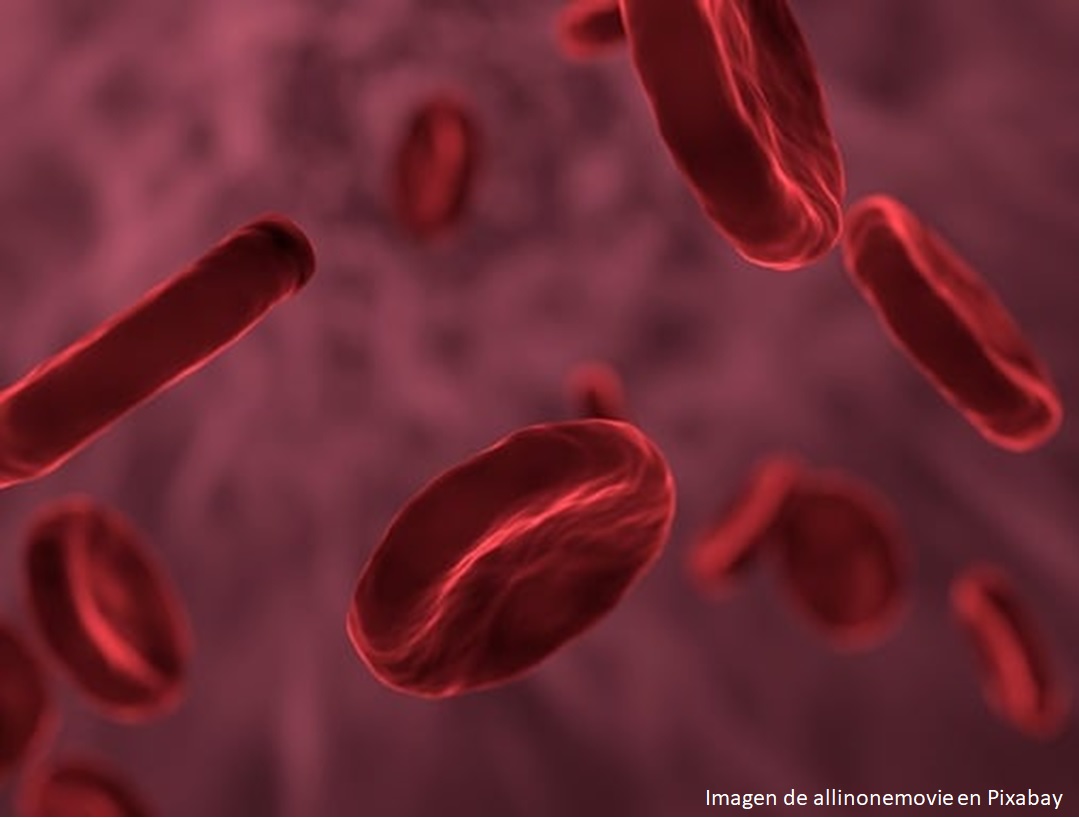Impact of Computerized Neuropsychological Rehabilitation in a Patient with Sickle Cell Anemia and ADHD. Single-case Experimental Study
Impacto de la rehabilitación neuropsicológica computarizada en un paciente con anemia de células falciformes y TDAH. Estudio experimental de caso único

This work is licensed under a Creative Commons Attribution-NonCommercial-NoDerivatives 4.0 International License.
Show authors biography
Introduction. Sickle cell anemia (SCA) is a genetic disease that causes a malformation in red blood cells, making them more fragile and leading to their lysis. Due to their abnormal shape, they predispose to occlusive events in smaller blood vessels, including those in the central nervous system. Literature documents the presence of silent and non-silent cerebral infarctions associated with SCA, along with respective cognitive impairments. In recent years, cognitive impairment and a higher prevalence of neurodevelopmental disorders such as attention deficit hyperactivity disorder (ADHD) have been reported in children with SCA who have not experienced ischemic brain events.
Method. An experimental and prospective single-case study was conducted, consisting of a rehabilitation program using the CogniFit platform for cognitive training in attention and concentration. Measurements of attention and inhibitory control responses were taken during 45 sessions, using the Cognitive Assessment Battery for Attention (CAB-AT).
Results. It was observed that the intervention had a significant impact on the attention component, which remained above the baseline even after discontinuing the intervention. However, no significant impact was found on inhibitory control.
Conclusion. Although the intervention improved attention, it did not have the same effect on inhibitory control. Complementing rehabilitation with pharmacological management and designing new studies involving heterogeneous populations are recommended.
Article visits 728 | PDF visits 189
- National Institutes of Health. National Heart, Lung and Blood Institute. Division of Blood Diseases and Resources. The management of sickle cell disease. Bethesda: NIH Publication; 2002. Available from: https://www.nhlbi.nih.gov/files/docs/guidelines/sc_mngt.pdf
- Figueiredo SV, Moreira TMM, Mota CS, Oliveira RS de, Gomes ILV. Creation and validation of a health guidance booklet for family members of children with sickle cell disease. Escola Anna Nery [Internet]. 2019;23(1). doi: http://dx.doi.org/10.1590/2177-9465-ean-2018-0231
- Piel FB, Steinberg MH, Rees DC. Sickle Cell Disease. New England Journal of Medicine [Internet]. 2017 Apr 20;376(16):1561–73. doi: http://dx.doi.org/10.1056/nejmra1510865
- Sundd P, Gladwin MT, Novelli EM. Pathophysiology of Sickle Cell Disease. Annual Review of Pathology: Mechanisms of Disease [Internet]. 2019 Jan 24;14(1):263–92. doi: http://dx.doi.org/10.1146/annurev-pathmechdis-012418-012838
- Onimoe G, Rotz S. Sickle cell disease: A primary care update. Cleveland Clinic Journal of Medicine [Internet]. 2020 Jan;87(1):19–27. doi: http://dx.doi.org/10.3949/ccjm.87a.18051
- Misnaza Castrillón SP. Drepanocitosis en Colombia: análisis de la notificación como enfermedad huérfana o rara al sistema de vigilancia en salud pública, 2016 y 2017. Informe epidemiológico nacional [Internet]. 2018 Jan 15;1–14. doi: http://dx.doi.org/10.33610/01229907.v23n1
- El Hoss S, El Nemer W, Rees DC. Precision Medicine and Sickle Cell Disease. HemaSphere [Internet]. 2022 Aug 18;6(9):e762. doi: http://dx.doi.org/10.1097/hs9.0000000000000762
- Paredes Arturo YV, Zapata Zabala ME, Martínez Pérez JF, Germán Wilmot LJ, Cuartas Arias JM. Capacidad intelectual en niños con desnutrición crónica. Revista de Investigación e Innovación en Ciencias de la Salud [Internet]. 2019 Dec 18;1(2):87–95. doi: http://dx.doi.org/10.46634/riics.27
- Hirtz D, Kirkham FJ. Sickle Cell Disease and Stroke. Pediatric Neurology [Internet]. 2019 Jun;95:34–41. doi: http://dx.doi.org/10.1016/j.pediatrneurol.2019.02.018
- Farooq S, Testai FD. Neurologic Complications of Sickle Cell Disease. Current Neurology and Neuroscience Reports [Internet]. 2019 Feb 28;19(4). doi: http://dx.doi.org/10.1007/s11910-019-0932-0
- Neumayr LD, Hoppe CC, Brown C. Sickle cell disease: current treatment and emerging therapies. Am J Manag Care. 2019;25(18 Suppl):S335-43. Available from: https://tinyurl.com/2my5kvnc
- Lee L, Smith-Whitley K, Banks S, Puckrein G. Reducing Health Care Disparities in Sickle Cell Disease: A Review. Public Health Reports [Internet]. 2019 Oct 10;134(6):599–607. doi: http://dx.doi.org/10.1177/0033354919881438
- Kavanagh PL, Fasipe TA, Wun T. Sickle Cell Disease. JAMA [Internet]. 2022 Jul 5;328(1):57. doi: http://dx.doi.org/10.1001/jama.2022.10233
- Brandow AM, Liem RI. Advances in the diagnosis and treatment of sickle cell disease. Journal of Hematology & amp; Oncology [Internet]. 2022 Mar 3;15(1). doi: http://dx.doi.org/10.1186/s13045-022-01237-z
- Pontificia Universidad Javeriana. Escala Abreviada del Desarrollo 3 (EAD-3). Bogotá: Pontificia Universidad Javeriana; 2016. Disponible en: https://tinyurl.com/ycxllhh8
- Reynolds CR, Kamphaus RW. BASC: Sistema de Evaluación de la Conducta en Niños y Adolescentes. Madrid, Spain: TEA; 2004.
- Wechsler D, de la Cruz López MV. WPPSI: Escala de Inteligencia de Wechsler para preescolar y primaria IV. Madrid, Spain: TEA; 2012.
- Matute E, Rosselli M, Ardila A, Ostrosky-Solís F. Evaluación neuropsicológica infantil. México: Manual Moderno; 2007.
- Rodríguez CA. Batería online de evaluación cognitiva para la Concentración (CAB-AT) CogniFit; 2023. Disponible en: https://tinyurl.com/2q8rbhqv
- Guerrero Pertíñez G, García Linares A. Plataformas de rehabilitación neuropsicológica: estado actual y líneas de trabajo. Neurología [Internet]. 2015 Jul;30(6):359–66. doi: http://dx.doi.org/10.1016/j.nrl.2013.06.015
- Rodriguez CA. Entrenamiento cognitivo para la atención y concentración de CogniFit. [Citado el 01 de abril de 2022]. Cognifit; 2023. Disponible en: https://www.cognifit.com/cognifit/training/index/t/concentration
- McWilliams S, Singh I, Leung W, Stockler S, Ipsiroglu OS. Iron deficiency and common neurodevelopmental disorders—A scoping review. PLOS ONE [Internet]. 2022 Sep 29;17(9):e0273819. doi: http://dx.doi.org/10.1371/journal.pone.0273819
- Hardy SJ, Forman S, Hardy KK, Schatz J. Sluggish Cognitive Tempo in Pediatric Sickle Cell Disease. Frontiers in Neurology [Internet]. 2022 Jul 7;13. doi: http://dx.doi.org/10.3389/fneur.2022.867437



